Blessings Unto Kasane:
Basho’s Haibun and Tanka of Hope to a Newborn Girl
Translation and commentary by Jeff Robbins
Assisted by Sakata Shoko
(Basho’s own words in bold to stand out)
Illustration by Ogura Reiko (Photos by J. Dougill)
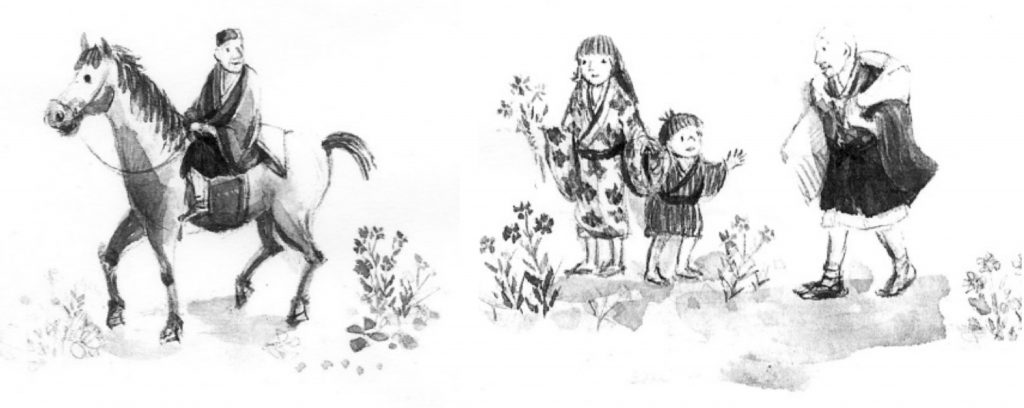
In Summer of 1689 Basho and Sora, on their journey to the Deep North, got lost among the fields of Kurobane in Nasu. A kindly farmer loaned them his horse for them to follow as far as it would go, then let it return on its own. The farmer’s two children came running after. Basho spoke to the little girl and was charmed. In his journal account, he writes
Two little ones follow in the footsteps of the horse, one a tiny princess who says her name is Kasane,
an unfamiliar name yet a gentle one.
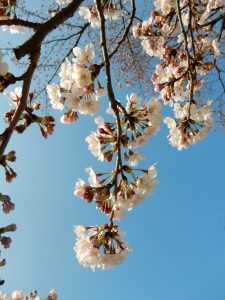 We see this is a Time of Peace — thanks to the dictatorship of the Tokugawa Shogunate which has eliminated the feuds and wars which plagued the country until the early part of the 17th century– so now in 1689, small children are not afraid of strangers. We also see that Dad was doing childcare while farming. Kasane is fortunate to have a father like this.
We see this is a Time of Peace — thanks to the dictatorship of the Tokugawa Shogunate which has eliminated the feuds and wars which plagued the country until the early part of the 17th century– so now in 1689, small children are not afraid of strangers. We also see that Dad was doing childcare while farming. Kasane is fortunate to have a father like this.
She said her name was Kasane: ka as in ‘cot,’ sa in ‘father’, ne in “nest.” Kasane(ru) is ordinarily not a name, but rather an active verb, “to pile up in layers, one on top of another.” Furthermore, in the dimension of time, kasaneru is “to reoccur, again and again, in succession”.
Nine months later, in the spring of 1690, Basho was in Zeze (Otsu City, just across the mountains east of Kyoto; beside Lake Biwa, the area around the eastern end of the Omi Ohashi bridge, ten minutes by train from Kyoto Station.) Basho formed a profound spiritual relationship with Zeze; this spring of 1690, he wrote about Zeze and the surrounding mountains and adjacent Lake Biwa
The mountains in silence nurture the spirit;
the water with movement calms the emotions
In a 1692 letter Basho in Edo writes to his follower Kyokusui who lived in Zeze,
Again and again within thy boundaries my heart points,
with humility I know not how, Zeze is like my hometown.
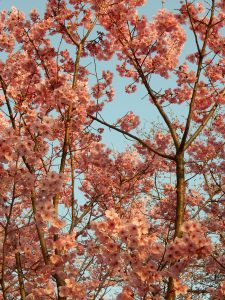 In the spring of 1690, someone in the neighborhood asked a Basho follower to arrange for the Master to choose a name for their newborn daughter. Basho remembers the Kasane in the Deep North, and passes her name on to another. The following haibun ending in a tanka are Basho’s prayer for his goddaughter’s happiness and longevity.
In the spring of 1690, someone in the neighborhood asked a Basho follower to arrange for the Master to choose a name for their newborn daughter. Basho remembers the Kasane in the Deep North, and passes her name on to another. The following haibun ending in a tanka are Basho’s prayer for his goddaughter’s happiness and longevity.
During my pilgrimage to the Deep North,
in one of the villages there was a little girl
who looked no more than five years old.
She was so small and indescribably charming
that I asked her name and she said Kasane.
What an interesting name!
In Kyoto rarely is it heard
so I wonder how has it passed down
and what is that “layers, again and again”?
The prose is mostly phonetic hiragana and only a few Chinese characters, and has a natural speech-like rhythm, — and we suppose Basho wrote it that way so it would be easy for little Kasane to read. The farmer and wife wanted a special name for their daughter, not just a name fashionable in the capital city. What were they thinking of when they linked her heritage and destiny to this lovely multi-faceted word?
“If I had a child this name she would receive
I said in jest to my traveling companion
and now, unexpectedly, through an acquaintance
I have been called on to be Name-giving Parent.
Without being biological parent, Basho gets the magical opportunity to give life through a name, and through a poem.
Blessings unto Kasane
Spring passes by
again and again in layers
of blossom-kimono
may you see wrinkles
come with old age
The double and triple meanings, in both space and in time, overlap in a web of blessing and hope for Kasane and all female children. A silk kimono will, with proper care, last for generations. “Layers of blossom-kimono” has three areas of meaning:
1) the two layers of kimono fabric over an inner robe;
2) the succession of blossom-kimono one woman passes through from bright to sedate as she ages;
3) the kimono passing onto her daughter and grand- daughter, the next layers of herself. Also “wrinkles” are both in the kimono and her skin.
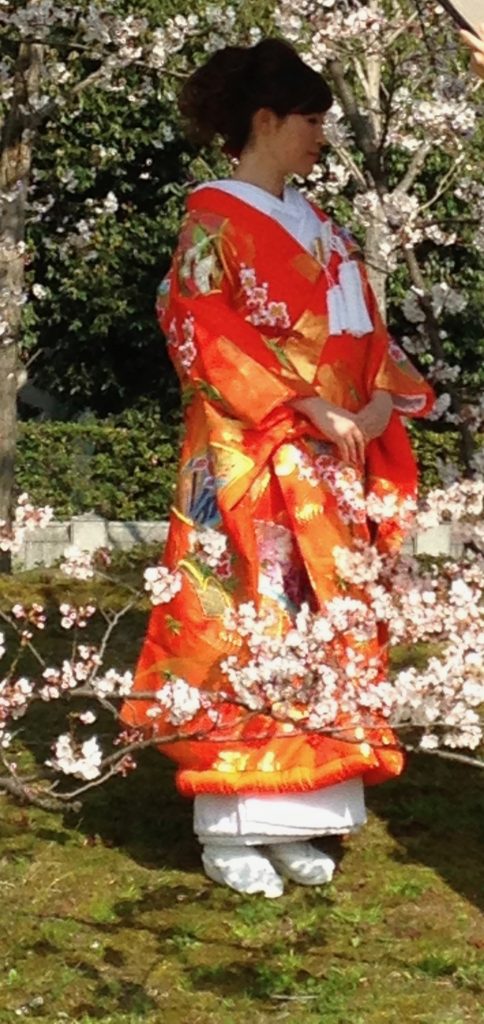 A formal kimono is a two-layer silk robe meticulously folded and tucked around the body in flat, even layers. The colors and pattern are chosen in harmony with the woman’s age. A blossom-kimono for a girl entering womanhood might be a soft pink with bold cherry blossom design on the lower portion. A thick brocade sash of a darker contrasting color encircles her waist. The red inner robe, suitable for a party, shows at the neckline, and where the left side of the skirt covers the right, margins of the kimono lining appear and disappear as she walks.
A formal kimono is a two-layer silk robe meticulously folded and tucked around the body in flat, even layers. The colors and pattern are chosen in harmony with the woman’s age. A blossom-kimono for a girl entering womanhood might be a soft pink with bold cherry blossom design on the lower portion. A thick brocade sash of a darker contrasting color encircles her waist. The red inner robe, suitable for a party, shows at the neckline, and where the left side of the skirt covers the right, margins of the kimono lining appear and disappear as she walks.
Speaking to the newborn spirit: ‘Kasane, now your time begins, stretching to infinity before unfocused eyes. Soon you’ll be laughing and playing in the sunshine – that is, if no wars come, and natural disasters, fatal illness, and financial ruin stay away too. One spring in youth, you shall be given your first “blossom-kimono,” an exquisite robe to be worn just once a year to view cherry blossoms, then folded up and stored away until next time to celebrate under cherry blossoms. The springs shall come and go with clouds of pink blossoms filling the treetops to fall in a shower of petals as you blossom into a young lady elegant in your impeccably layered kimono. Each year as you sit with legs folded under you on the straw mat under the cherry trees, creases shall form in the fabric. Carefully, as your mother shows you, restore its silky smoothness for another year.
I pray the day comes for you to pass this youthful kimono onto your daughter, while you wear one more moderate in color and pattern – and this too passes onto her, and you to the dark sedate kimono of an older woman. So, Kasane, may our nation remain at Peace and the happiness in your family pile up layer upon layer until wrinkles in the fabric no longer smooth out and you see wrinkles of old age across your face. Do not despair, my child, for you live again as spring passes by and your granddaughters laugh and chatter in their blossom kimono.’
The tanka SPRING PASSES BY offers Hope to small females —Hope for a childhood without misfortune, hope that she will grow into womanhood and see grandchildren. Basho speaks of what concerns women: the succession of life, the happiness of children — the conditions of Peace, both in society and in family, in which little girls can dress up and party with relatives and friends, and life goes on generation after generation. In less than a single tweet, Basho encapsulates the life of one woman from newborn to wrinkles.
“Civilization will begin the day the well-being of a newborn baby prevails over any consideration.”
– Wilhelm Reich
I know of one poem that compares to Basho’s verse in utter simplicity with profound human depth: it was written by a four-year-old Russian boy in 1928. In the 1960s when nuclear war between America and Russia seemed imminent, the little boy’s poem was set to music and became the refrain to a song. The lyrics never caught on in translation, but the refrain became an internationally known prayer for Peace:
May there always be sunshine
May there always be blue sky
May there always be mama
May there always be me
Both the poems of 46-year-old Basho and 4-year-old Russian boy make a wish from destiny – not the wish for a million dollars or a movie star lover—but rather the wish for something infinitely more precious: that our current Peace will continue. Millions of small children in the world today have reason to doubt these four wishes. The boy speaks only of the environment, mama, and himself, while Basho looks ahead to future layers.
Spring passes by
again and again in layers
of blossom-kimono
may you see wrinkles
come with old age
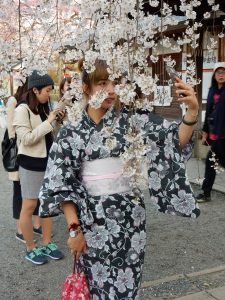
*******************
To access one hundred articles about women, children, friendship, love, and compassion in Basho, please go to my data base Basho4now@yumpu.com. Here are a few of my recent Yumpu posts which relate to Blessings unto Kasane:
Babies in Basho — 6 Basho haiku, a tanka, 11 renku, and 6 Letters all about babies.
Breastfeeding in Basho — 2 Basho haiku and 8 renku about breastfeeding
Child Welfare – 2 haiku, 8 renku, and 4 sections from his letters
I plead for your help in finding a person or group to take over my 3000 pages of Basho material, to cooperate with me to edit and improve the presentations, to receive all royalties from sales, to spread Basho’s humane wisdom throughout the world and preserve for future generations.
Jeff Robbins basho4now@gmail.com

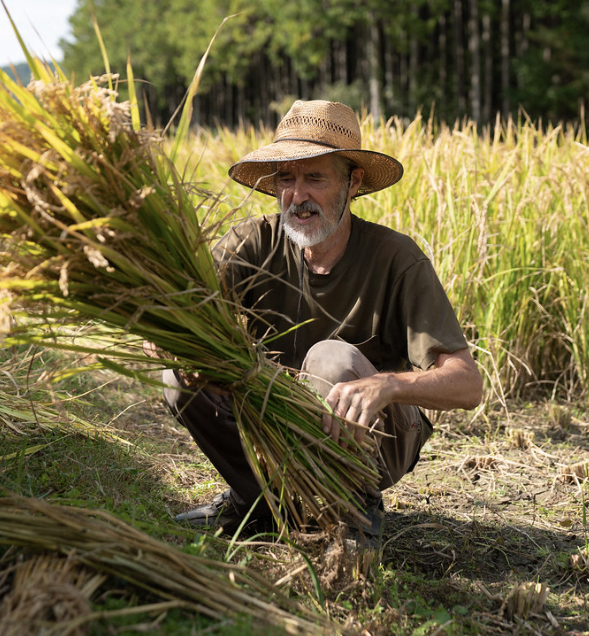





Recent Comments